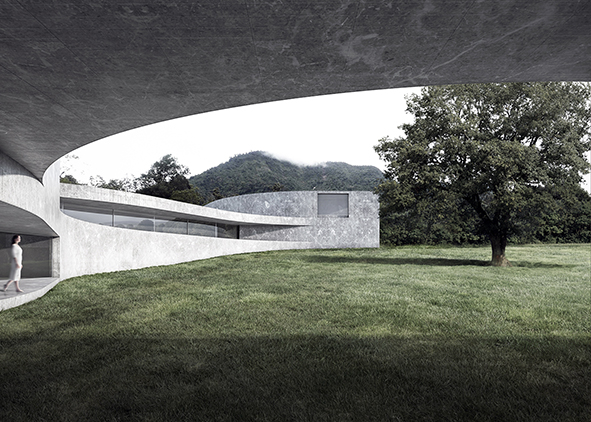Process, Project and Architecture
DOI:
https://doi.org/10.19229/2464-9309/532019Keywords:
process, systematization, architecture, geometry, standardAbstract
The concept of systematization is an innovative approach to the project that introduces a system of order with a method that proceeds by aggregating repeatable parts and regulates the phases of the design process. These principles can be found in the theories and experiments that lead to contemporary architecture, such as seriality, standardization, modularity that transform the project into a process and determine a new aesthetic. The works of the Fran Silvestre Arquitectos studio represent interesting examples that highlight the clarity of the process that operates through seriality and the definition of configurations based on dimensional relationships rather than on scale factors (as inherent in the concept of type) from which coherent structural and spatial solutions derive.
Downloads
Article Metrics Graph
References
Argan, G. C. (1970), L’arte Moderna 1770-1970, Sansoni, Firenze.
Basile, G. B. F. (1870), “Principi di Ausettismo Architettonico”, in Nuovi Annali di Costruzioni, Arti ed Industrie, year II, p. 5-16.
Cohn, D. (2017), “Sólido y vacío | Solid and void”, in Rubio, G. and Camarasa, P. (eds), Fran Silvestre Arquitectos – Escenarios para la vida | Scenaries for life – 2005-2017, General de Ediciones de Arquitectura, Valencia, pp. 4-9.
De Fusco, R. (1987), “Una semiotica per la didattica”, in Villari, S. (ed.), J. N. L. Durand (1760-1834) – Arte e scienza dell’architettura, Officina Edizioni, Roma, pp. 7-12.
De Marco, P. (2018), “Il colore delle idee | The color of ideas”, in Margagliotta, A. (eds), La belleza eficaz, Libria, Melfi, pp. 170-177.
De Marco, P., Silvestre, F. and Camarasa, P. (2018), “Systematization and architecture”, in Cabrera i Fausto, I. (ed.), Reactive proactive architecture, Editorial Universitat Politècnica de València, València, pp. 38-43.
Douglas, A. (1952), “Dinner in Yesterday’s Bedroom: It’s possible”, in Chicago Daily Tribune, newspaper, 24 August.
Gropius, W. (1965), The New Architecture and the Bauhaus, The MIT Press, Cambridge.
Klaus, K. and Bittner, R. (2017), Craft becomes modern – the Bauhaus in the making, Kerber, Bielefeld.
Le Corbusier (1986), Towards a new architecture [orig. ed. Vers une architecture, 1923], Dover publications, New York.
Margagliotta, A. (ed.) (2018), La belleza eficaz, Libria, Melfi.
Montaner, J. M. (2008), Sistemas arquitectónicos contemporáneos, Gustavo Gili, Barcelona.
Pedreirinho, J. M. (ed.) (2019), “Fran Silvestre Arquitectos”, in A.MAG | International Architecture Technical Magazine, vol. 15, pp. 2-77. [Online] Available at: issuu.com/a.mag/docs/amag_15_fran_silvestre [Accessed 3 April 2019].
Pizzigoni, V. (2010), Ludwig Mies va der Rohe – Gli scritti e le parole, Einaudi, Torino.
Rubio, G. and Camarasa, P. (eds) (2017), Fran Silvestre Arquitectos – Escenarios para la vida | Scenaries for life – 2005-2017, General de Ediciones de Arquitectura, Valencia.
Smith, E. A. T. (2009), Case study houses [1945-1966], Taschen, Cologne.
Tessenow, H. (1998), Osservazioni elementari sul costruire [orig. ed. Hausbau und dergleichen, 1916], Franco Angeli, Milano.
Valéry, P. (1964), “The Conquest of Ubiquity”, in Aesthetics, translated by Manheim, R., Pantheon Books, Bollingen Series, New York, p. 225.

Downloads
Published
How to Cite
Issue
Section
License
This Journal is published under Creative Commons Attribution Licence 4.0 (CC-BY).
License scheme | Legal code
This License allows anyone to:
Share: copy and redistribute the material in any medium or format.
Adapt: remix, transform, and build upon the material for any purpose, even commercially.
Under the following terms
Attribution: Users must give appropriate credit, provide a link to the license, and indicate if changes were made; users may do so in any reasonable manner, but not in any way that suggests the licensor endorses them or their use.
No additional restrictions: Users may not apply legal terms or technological measures that legally restrict others from doing anything the license permits.
Notices
Users do not have to comply with the license for elements of the material in the public domain or where your use is permitted by an applicable exception or limitation.
No warranties are given. The license may not give users all of the permissions necessary for their intended use. For example, other rights such as publicity, privacy, or moral rights may limit how you use the material.


















































































